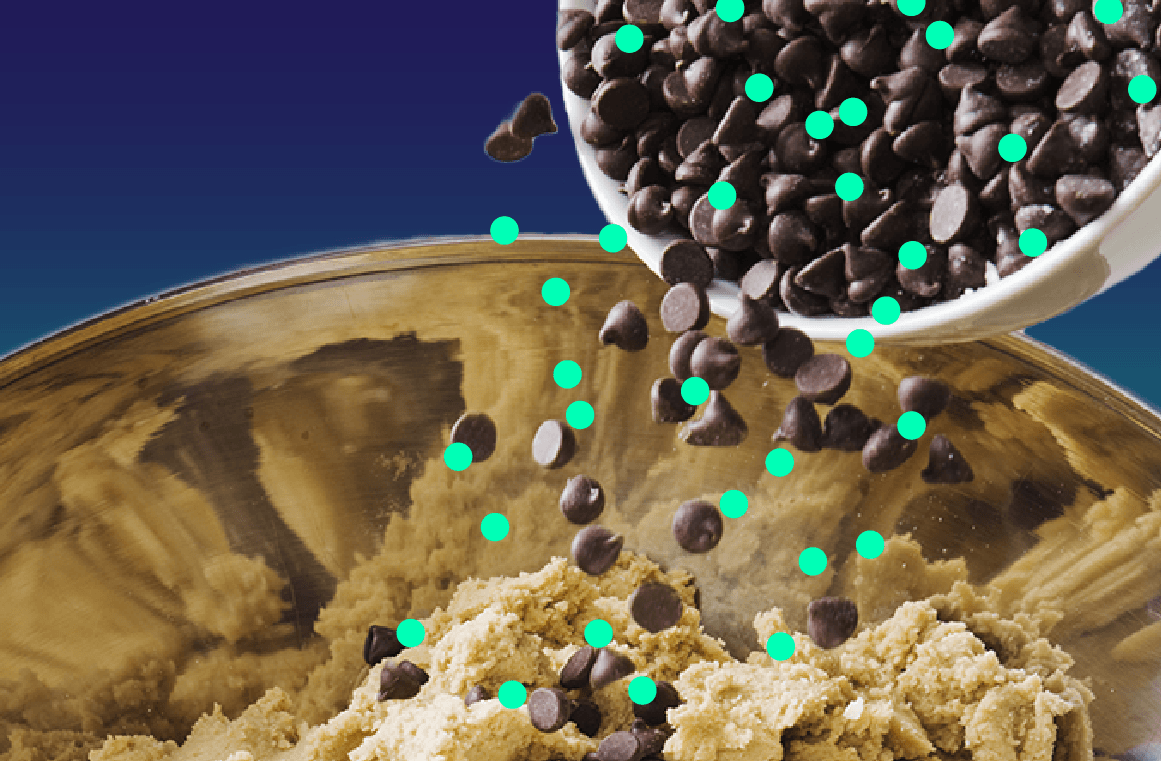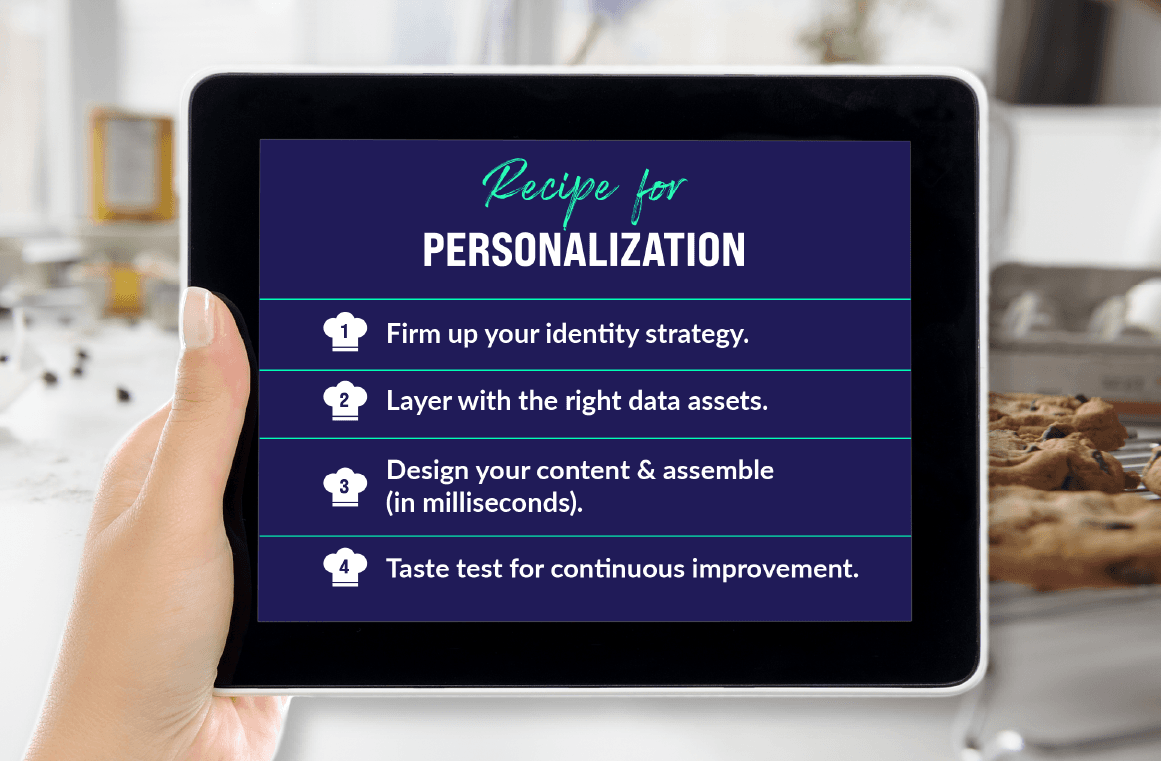


Have you ever baked something by following a recipe—maybe a layered blondie cheesecake jar from renowned DTC bakery, Blondery, or even Grandma’s chocolate chip cookies? What happens when you don’t have all of the ingredients and their measurements? Or a bowl and mixer to transform those ingredients into the finished goodies?
It gets a lot more complicated—like trying to bake a cake without eggs. You might have to do a lot of improvising, and who knows if the final product will be edible.
Now, think of personalization like a recipe. Just like that cake jar or chocolate chip cookie, your personalization recipe hinges on key ingredients coming together just so. Thankfully, that recipe is actually quite simple:
Let’s take a look at how to work through the personalization recipe so you can get your own programs cooking.
Strong customer identity is critical to accurately reach existing customers and prospects in real time, to deliver personalized messaging and drive measurable business outcomes. It connects each individual's online and offline activity to a stable person-level ID. All marketing decisions and measurement tie back to these IDs, for clear, comprehensive views of your customers.
In this case, your identity resolution approach (which has its own more detailed recipe!) is the foundation—the core element you will need before you layer on any other ingredients to that sweet-smelling personalization success. Take away that clear view of your customers (thanks, third-party identifier deprecation!), and you’re back to baking cake without eggs. Or maybe even an oven.
The culinary field calls this mise en place—bringing everything together and preparing it for use. We call it data alignment and activation planning.
The goal is to use data to understand your customers on a 1:1 level so that you can anticipate their needs—then tailor your messaging and offers to their specific, personal situations. When you let consumer intent guide your conversations, you’re able to build more authentic relationships and increase brand loyalty.
Thankfully, the data you need is everywhere, but it’s messy—really messy—and not always easily captured.
To get beyond basic customer attributes, you need to collect and harness the right data and use it to create highly personalized interactions. These data assets can enrich clients’ first-party data with demographics, behavioral insights or online and offline transactions and can help to predict purchases driven by machine learning and AI.
Here’s a few things to keep in mind as you build your data capture strategy:

It’s easy to have a highly personal, real-time conversation with one person at a time. But you’re not talking to one person at a time. Real personalization happens when you create and optimize the consumer experience across all touchpoints—email, web, social media, direct mail, in-stores—for everyone, all the time.
This ingredient is harder to come by. You’ll need to build out the following capabilities to activate personalized marketing in all channels.
Real-time decisioning
Personalization is more than just presenting the best content or offer. You need to provide each customer with the best offer and deliver the message to their preferred device, at the right time, to influence their purchase journey. This is not easy, but with a strategic vision and plan—enabled by technology—it’s certainly achievable.
Creating and managing content
Content is essential to supporting personalized conversations—and you need to be able to assemble it and send it out the door in near real time. Creating unique content at the individual level can be challenging, time-consuming and expensive. You should regularly evaluate your content strategy—and be prepared to invest time and resources to update accordingly.
Channel alignment and optimization
All marketers aspire to remove channel silos in order to integrate teams, programs and messaging in the customer’s best interest. Simultaneously, they are pulled in another direction by attribution requirements, with each channel team hungry to carve out their piece of the revenue pie. To avoid this conflict, many organizations are removing silos and unifying their teams to focus on the customer journey regardless of the channel. This allows for a more centralized, omnichannel approach to marketing strategy.
With all of these personalized conversations happening, it’s important to check in on how your recipe is coming together—and course correct as needed. This means creating an always-on cycle of continuous learning and optimization.
To understand the impact of and evolve your personalization strategy, you need to be able to analyze engagement—do your lifecycle communications resonate with customers? What content inspires customers to act?
You can make it happen by first defining your business objectives and mapping hem to KPIs and metrics. Next, establish robust test designs, monitor performance, analyze and adapt.
Unlike Blondery's delicious blondie cheesecake jars, your personalization recipe won’t come together in an afternoon. We recommend a crawl-walk-run approach, with frequent testing, measurement, and feedback:
While it might take some time to perfect your version of personalization, you’ll be thankful you did—it will quickly become the staple of your marketing pantry.

If you're interested in a deeper dive into the importance of personalization in your marketing strategy, check out our new guide: Personalizing the loyalty experience: 6 key ways to build stronger customer connections. And you can always contact us if you'd like to get a taste of how Epsilon can help amp up your marketing personalization.